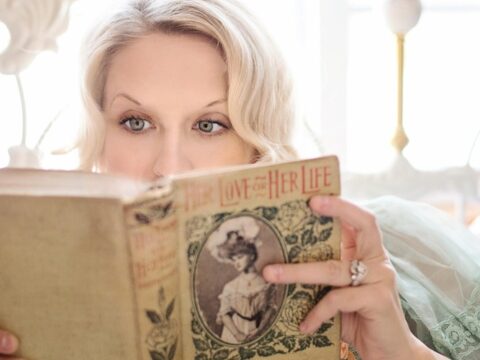Learn the rules like a pro so you can break them like an artist.
Pablo Picasso
You know, writing has a lot of rules. There are all the complexities of grammar, syntax, and persuasive rhetoric. Then there’s the encyclopedia of unwritten pointers of what makes writing good, decent, or atrocious. But I’m not here to lay out the rules of writing. Instead, let’s talk about how fun it can be to rebel against them.
First, There’s a Difference Between Breaking and Stumbling
Let me be very clear: the rules of writing exist for a reason. As a traditionally trained editor, I have huge respect for both grammar and writing best practices. And I can attest that following the rules is a good way to look intelligent and communicate effectively.
However! Breaking the rules in artistic ways is a super fun and fulfilling pastime. The key is breaking them ON PURPOSE. Disregarding them because you don’t understand why they exist isn’t a great look. It makes your writing sloppy, which makes you look like you have no clue what you’re doing.
In contrast, breaking rules on purpose—with intentionality and style—can make your writing sparkle. So let’s cover six common rules of writing that you should try breaking sometime. Side note: if you are a writer, you might deeply disagree with some pointers I’m about to present because they’re based on my own personal taste. And that is okay!
Rule #1: Avoid Tropes
Why It’s a Rule
If you’re unclear what a trope is, tropes are any plot, character, setting, device, or pattern that readers will instantly recognize. Because it shows up everywhere.
How many times have you seen a female character meet her love interest by colliding with him and dropping her books? Or a villain on the cusp of victory who launches into an evil monologue? Or a young hero who gets plucked from a boring, rural life to go on an adventure? That last one could be Bilbo Baggins, Luke Skywalker, Dorothy Gale, or ten thousand other characters, which is why it’s a trope.
Bottom line: it’s a rule of writing to avoid tropes because they’re almost always cliché. And in the worst cases, they make your writing really boring.

Why Break It?
Because in the best cases, harnessing tropes can make a story feel satisfying, familiar, hilarious, or completely unexpected. Here are three fantastic ways to use tropes:
- Subvert a Trope. The very fact that tropes are so familiar is something you can use to your advantage as a storyteller. Why not toss in a trope or two and turn them on their heads in a way your reader never saw coming?
- Call Out a Trope. Putting your characters in ridiculously tropey situations can be quite charming, especially when the character recognizes what’s happening and doesn’t find it particularly amusing. If you can make your reader laugh with tropes, go for it.
- Execute a Trope with Style. And no, I don’t mean murdering a trope with a guillotine. I mean unabashedly writing a trope so well that no one can get annoyed at you for doing it. This works particularly well if you’re using the trope to highlight a character in a meaningful way or show off a particularly cool aspect of your setting.
Rule #2: Show, Don’t Tell
Why It’s a Rule
If you’ve heard any rule of writing, it’s probably this one. “Show don’t tell” is the mantra of Creative Writing 101 because amateur writers really struggle to bring a story to life rather than stating that X, Y, and Z happened because Character A and Character B are in love and Character C misses his dead father.
When writers just tell you stuff with no nuance, action, subtly, or dialogue, the story gets really stale. Most readers won’t even try choking that down.
Why Break It?
Here’s the thing: showing 100% of your story can be a drag too. Writers—especially in epic fantasy—can actually show too much of the boring travel sequences instead of skipping ahead. Another example is Jane Austen’s eternal dialogue sequences that last SO LONG that you forget who’s in the drawing room. (Please don’t come for me, Austen fans. You know it’s true.)
I’m actually a huge fan of blending showing and telling for variety. Think 80% show, 20% tell. Here are some effective tell methods:
- Short exposition. Too much exposition is wretched, but snippets here and there can be useful to show time passing, clear up backstory, and allow a character to reflect on new information.
- Transitions. I will never fault any writer for skipping me forward in the plot. Skip those boring parts and just tell me what happened. I won’t even be mad, and neither will most readers.
- First-person character narration. Hey, if their voice is distinctive, funny, or clever in a good way, you can tell me stuff all day long. Narrators are making a comeback lately.
Rule #3: Your Main Character Needs to Be Likeable
Why It’s a Rule
There are 40 bazillion books in the world. Why on earth would readers stick around for a main character they hate? For me personally, if a protagonist is whiney, irritating, robotic, or just blah, I will put the book down nine times out of ten.
Most readers look for something to admire in their main character. They want a hero to root for. Or just a person struggling with something more relatable than deciding which of the two hot, desperate love interests she wants to date. (I’m looking at you Bella Sw—I mean . . . Katniss Everdeen.)
Anyway, readers tend to invest in protagonists they actually like.
Why Break It?
Wanting to read about a character doesn’t always have to do with likeability. Really, it has to do with your readers being interested. And getting hooked.
Your characters don’t have to be nice, moral, or stereotypically likeable to carry a story. In fact, morally ambiguous, complex characters can be an improvement. There’s a reason why the antihero trope has become so popular.

Here are some ideas to make a main character compelling without being likeable per say:
- Give them complex, fascinating powers.
- Foreshadow their gruesome and inevitable downfall.
- Give them a spectacular sense of humor to offset their black personality.
- Lock two iffy characters in a conflict that’s so interesting the reader can’t look away.
- Make them admirably competent at one unusual skill.
- Give them a condition or fatal flaw that generates sympathy despite their unlikeability.
- Make the narrator unreliable in a way that foreshadows a delicious comeuppance.
- Give them a backstory that explains why they sabotage themselves and others.
- Make them relatable on an uncomfortable level that readers can’t deny.
- Give them a challenge so big that they’re forced to change.
- Focus on worldbuilding and plot rather than characters.
Rule #4: Stories Need to Feel Realistic
Why It’s a Rule
Even in fantasy settings, it’s important to give your story rules to abide by. Why? Because if your story doesn’t have a sense of realism or logic, your readers’ eyes will roll into the back of their heads right before they close your book.
As a general rule of writing, your world needs parameters and your characters need strong motivations. If you run around making things up, letting your characters do whatever for no apparent reason, and quietly erasing all consequences in your story, your book will be chaos. And it won’t work.
Why Break It?
This is generally a rule I don’t break because books need to make sense. Or at least feel like they make sense. BUT (and this is a huge but) sometimes getting too caught up in realism can kill your creativity.
Adhering militantly to historical accuracy, laws of physics, or your original inspiration for the story “because that’s how it happened in real life” can be a horrible idea. Because readers often don’t care about all the nitty gritty details. Sometimes taking a little creative license can really make a book work.
I’m all for creating in-universe rules that you plan to break later. As long as you don’t do it too often. I also support choosing the rule of cool over a perfectly airtight plot when it serves your book. Take Leigh Bardugo’s Six of Crows for example. That book has some major plot holes, but the action was so cool that her readers didn’t care. Even I couldn’t put it down.
Rule #5: Readers Hate Cheese
Why It’s a Rule
What do I mean by cheese? I’m talking about the cheesy scenes usually reserved for campy cult classic movies. As a general rule of writing, mainstream audiences don’t handle sentimentality very well. They want to be able to respect your story and read something that takes itself seriously on some level. Unless you’re intentionally making fun of it, cheese is usually best reserved for grilled cheese sandwiches and Hallmark movies in December.

Why Break It?
Because human beings are sentimental, cheesy creatures! Sentimentality is the lifeblood of love, heartbreak, awkwardness, and pretty much every strong human emotion that exists. I for one think a little cheesy action in the right place can be absolutely delightful, especially when writing teenagers. Young people try to act cool, get romantic, and handle their exploding hormones on a daily basis. Things are bound to get cheesy from time to time.
Honestly, no writer should shy away from writing genuine emotions, no matter how embarrassing they might feel to put in your story. Be cute. Be cringe. Let your character get swept up in the moment and say something out loud that makes everyone around them slap their foreheads. In the dark, sarcastic world we live in, true sweetness is a breath of fresh air.
Rule #6: Great Stories Are Surprising and Unexpected
Why It’s a Rule
Is there anything better than a great plot twist? Face it, we read to be entertained. “I just want to read something predictable,” said no reader ever, which is why publishers are always looking for the next big thing. Something unique and show stopping to give readers something to talk about. This is why people read isn’t it? Hence why keeping your stories fresh and surprising is one of the ultimate rules of writing.
Why Break It?
A lot of books—and popular TV shows—are obsessed with outsmarting their audience. Rather than weaving a compelling, beautiful story, they live and die for the plot twist even if it falls flat. But the truth is that a well-executed ending that you’ve anticipated for an entire book can be far more satisfying.

I’m obviously biased since I write retold fairy tales, but I am a HUGE fan of breathing new life into familiar stories and focusing on character growth instead of shocking my readers. I recently read a book with an ending I predicted right from the first chapter. And I still enjoyed it. Because the prose, the characters, and the ending were all good!
So don’t rely only on big reveals. The #1 thing readers want is to escape into a story that’s entertaining. Quiet, cozy plots without earth-shattering reveals can provide a tremendous reading experience too. Especially when the writing is excellent. ❧




